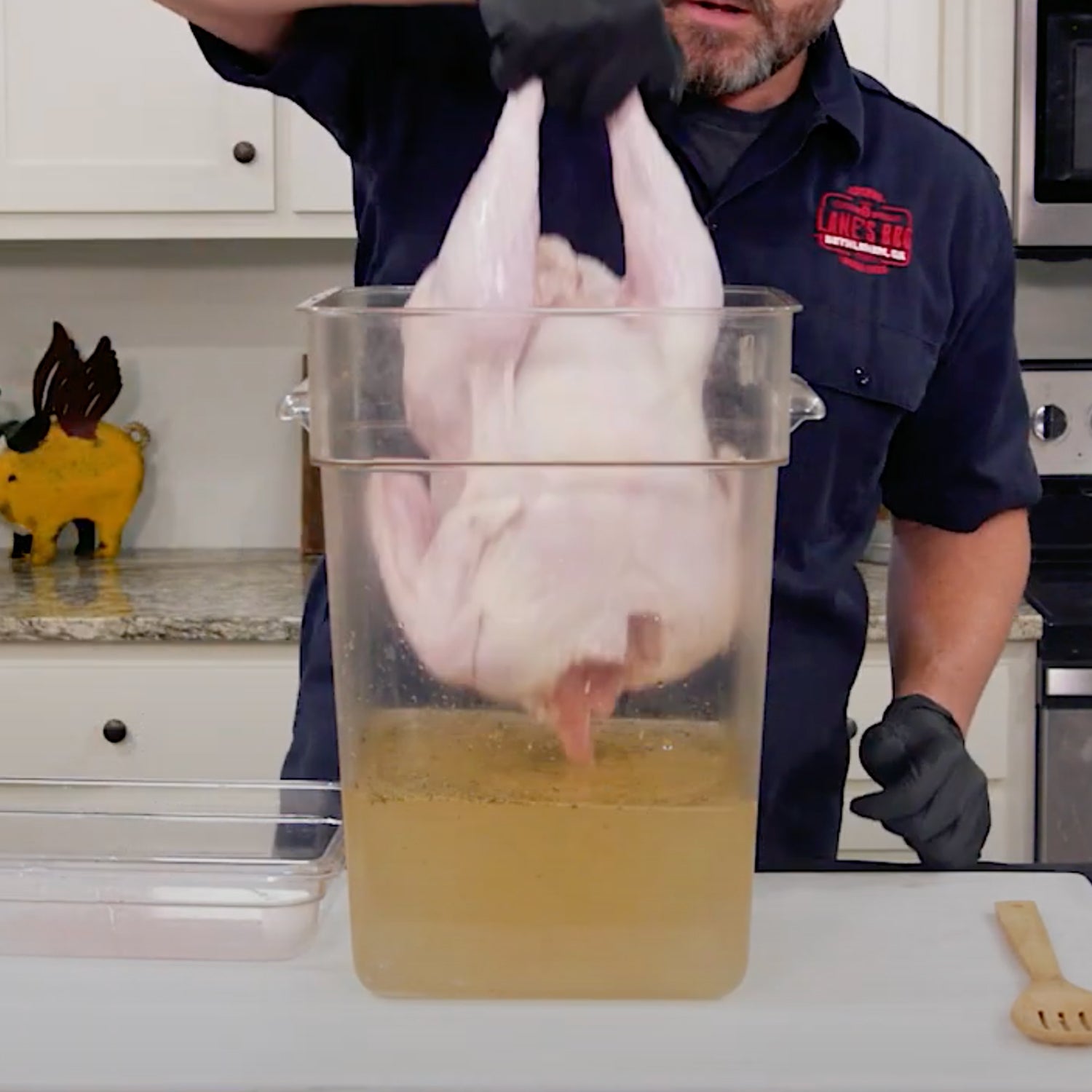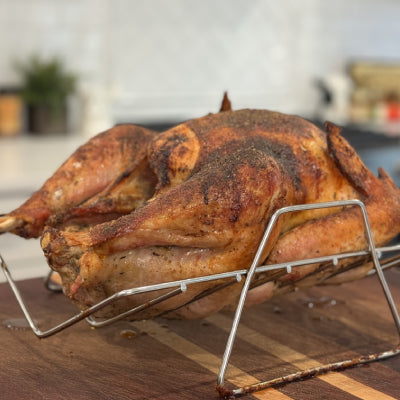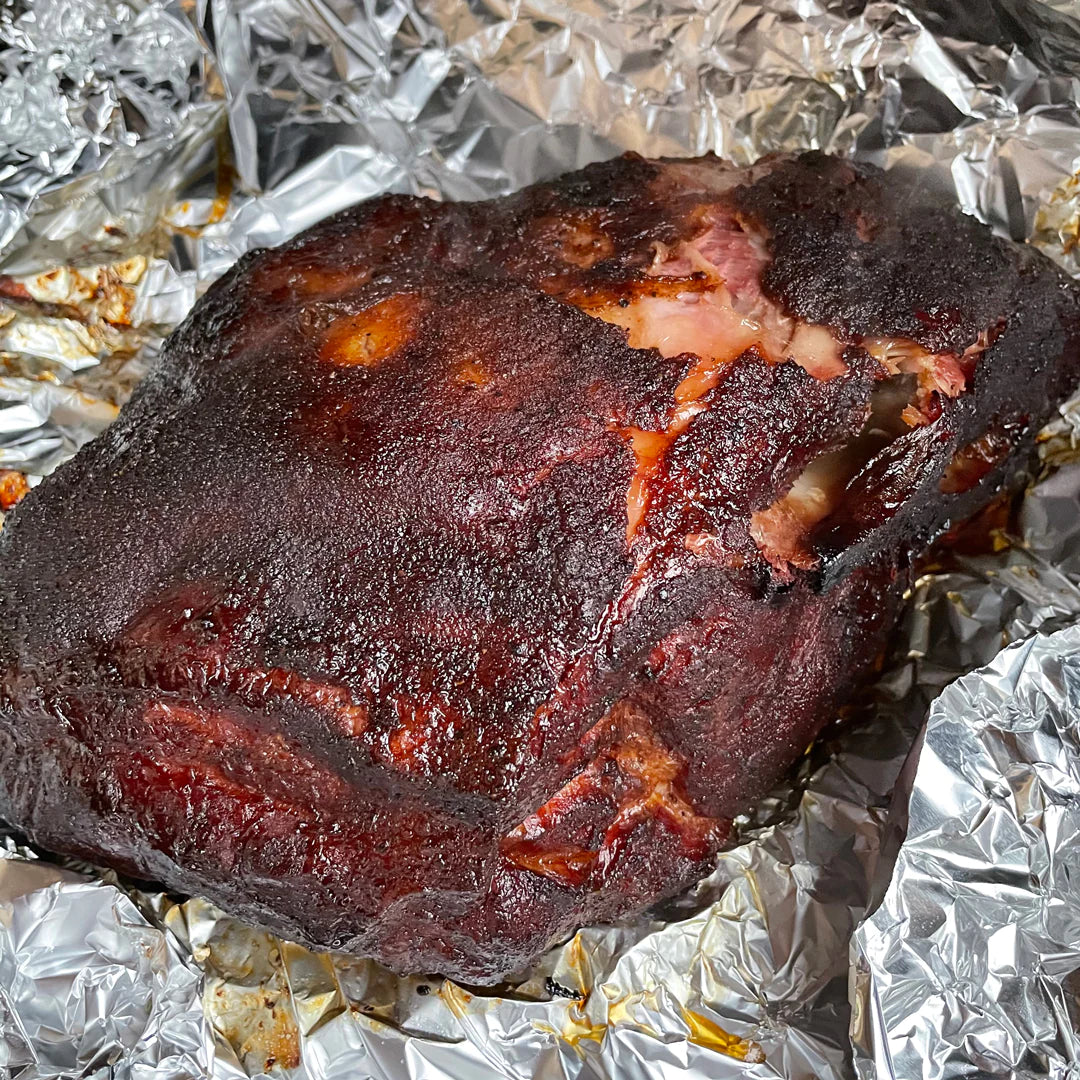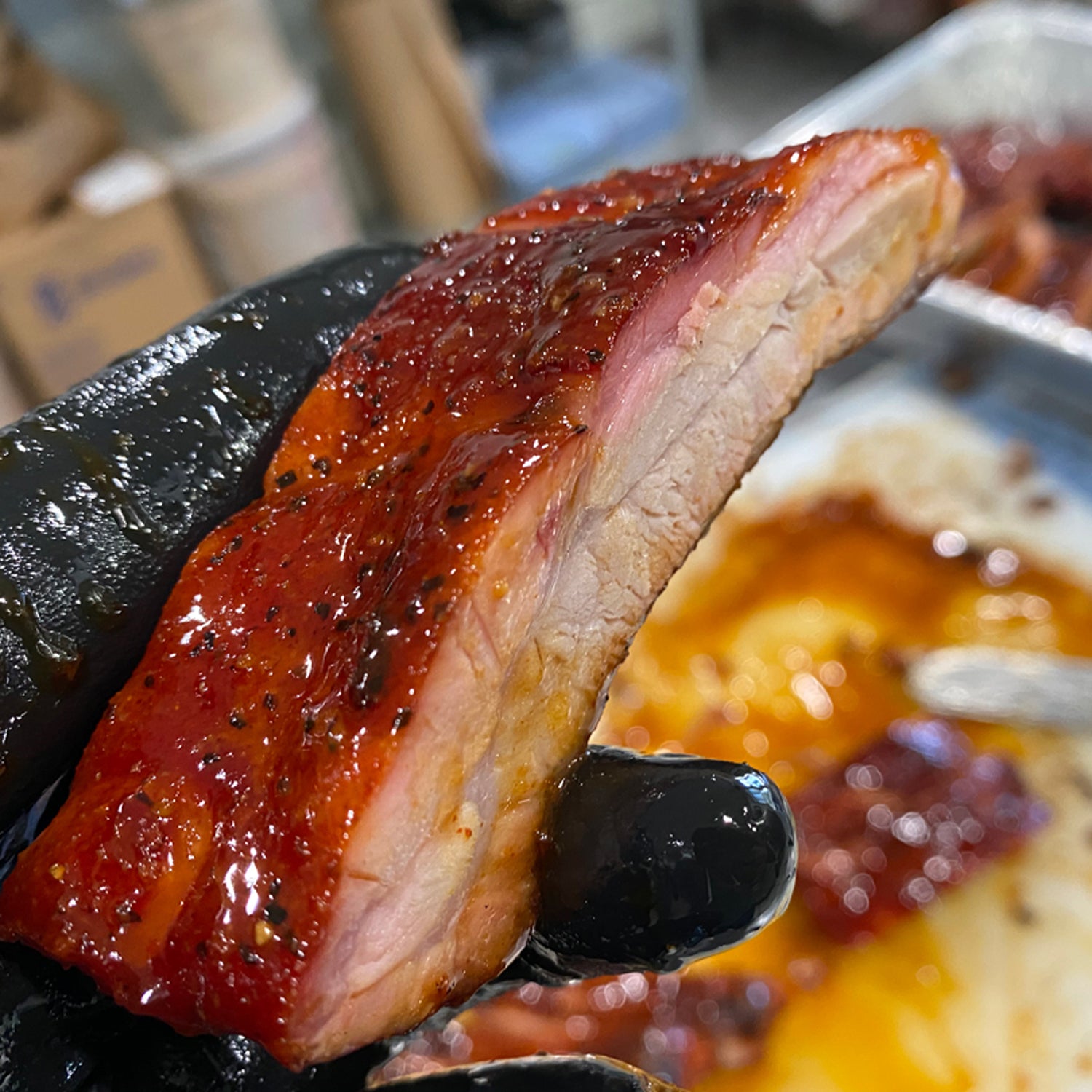How to Brine (and Why You’ll Never Skip It Again)
Brining is the easiest way to lock in juice and build flavor—from holiday turkey to weeknight pork chops.
Brining 101
Let’s be real—dry, bland meat is a buzzkill. Brining fixes that. It’s simply salt dissolved in water (plus optional sugar, herbs, and spices) that seasons from the inside out, helps meat retain moisture, and makes every bite more tender.
Short version: brining = juicier, more flavorful cooks, whether you’re smoking, grilling, or roasting.
How to Brine Video:
Why Brining Works (The Quick Science)
- Flavor from within: Salt penetrates and carries seasoning deeper than a surface rub can.
- Moisture retention: Salt changes muscle proteins so they hold onto more water as they cook.
- Tender texture: Fibers relax just enough for a better bite—without turning mushy (as long as you don’t overdo it).
- Even seasoning: The whole cut tastes right, not just the crust.
How to Brine (Step-by-Step)
- Choose your brine. You can make it yourself or choose one of our ready-made brines with all the flavors you need to soak in the best flavors for your protein of choice.
- Submerge fully. Use a food-safe bucket, pot, or heavy-duty bag like our Lane's Brine Bag. Weigh it down if needed to keep everything under the surface of the water mixture.
- Chill it. It's always best to let your proteins brine in a chilled location like a fridge or a cooler packed with ice.
-
Time it right. Stick to these sweet spots:
Protein / Food Brining Time Chicken pieces 4-5 hours Whole chicken (4–5 lb) 8-12 hours Turkey (10–16 lb) 24-36 hours Pork chops / loin 5-6 hours Pork shoulder / ribs 8–12 hours Salmon & firm fish 1–3 hours Shrimp 30–60 minutes Veggies (cukes, zucchini, carrots) 10–60 minutes - Dry. At this point, you are almost ready to cook, but it helps to let your brined meats with skin (turkey, chicken, etc.) sit a bit to dry. The fridge is a great choice. For example: After brining a turkey, pull it out of the brine and let it sit in the fridge for around another 8-12 hours to dry. This will help give the skin a crisper texture when cooking.
- Season & Cook. Depending on the type of meat or veggie you are smoking or cooking, be sure to cover it with your favorite flavor of seasoning. Most of our rubs have been crafted to work on any type of meat, but some pair better with different proteins than others due to the ingredients. For instance, because of the sugar, Apple pie and Spellbound go great with pork. Legendary Chicken goes amazingly (of course) on chicken. Find your favorite seasoning and go to town with it. Now you are ready to cook!
Not Just for Turkey: What to Brine
Turkey is the classic—but brining is a year-round power move. Here are the most popular picks:
- Turkey: whole birds, breasts
- Chicken: whole birds, breasts, thighs, wings
- Pork: chops, loins, tenderloin, shoulder, ribs
- Beef: lean steaks and roasts benefit most
- Seafood: salmon, cod, halibut, shrimp (short soaks)
- Game birds: duck, pheasant, quail, Cornish hens
- Veg & fruit: cucumbers (quick pickles), watermelon rind, zucchini, carrots
- Plant-based: firm tofu, seitan
Pro Tips for Better Brining
- Keep it cold: Always brine under 40°F in the fridge.
- Choose the right salt: Kosher or sea salt. Table salt is denser—reduce if you swap.
- Balance with sugar: Adds flavor and promotes browning—optional but recommended.
- Aromatics are your playground: Citrus, garlic, bay, peppercorns, herbs—go wild, just don’t overpower.
- Dry-brine alternative: Salt the surface and rest uncovered for killer crispy skin on poultry and steaks.
- Safety: Discard used brine—don’t reuse unless you’ve fully boiled and re-salted.
Make It Easy with Lane’s
Skip the guesswork with Lane’s Signature Brine and Lane’s Sweet Tea Brine. They dissolve fast, taste balanced, and work on turkey, chicken, pork, and more.
Brining FAQ's
Does brining make meat too salty?
Not if you follow the ratios and timing. Salt seasons evenly without turning it harsh. Worried? Give it a quick rinse, then pat dry.
Can I brine overnight?
Absolutely—especially for bigger cuts like turkey or pork shoulder. Just don’t exceed the recommended times to avoid soft texture.
What’s the difference between wet brine and dry brine?
Wet brine = soak in salted water (often with sugar and aromatics). Dry brine = rub salt on the meat and rest in the fridge. Wet brine boosts moisture; dry brine saves space and gives ultra-crispy skin.
Can I reuse brine?
No—toss it after use. Once raw meat’s been in there, it’s not safe to reuse.
What’s the fastest protein to brine?
Seafood. Shrimp and most fish fillets soak fast—often under an hour.
Do I need a special container?
Nope. Food-safe bucket, pot, or a heavy-duty bag, like our Lane’s brine bags, works great—just fully submerge and keep it cold.
Is brining just for turkey?
No way. It shines on chicken, pork, lean beef cuts, salmon, shrimp (short times), game birds, and even quick-pickled veg like cucumbers or watermelon






1 comment
Roz
I have been using a brine for may years. It always amazes me how much better food turns out when you brine. However, It seems folks are reluctant to try it. I used your brine last year for the turkey and Cornish hens. I must tell you it is really good and imparts a very nice flavor to your food. It’s a no muss no fuss brine that is actually great tasting….
Roz
Leave a comment
All comments are moderated before being published.
This site is protected by hCaptcha and the hCaptcha Privacy Policy and Terms of Service apply.